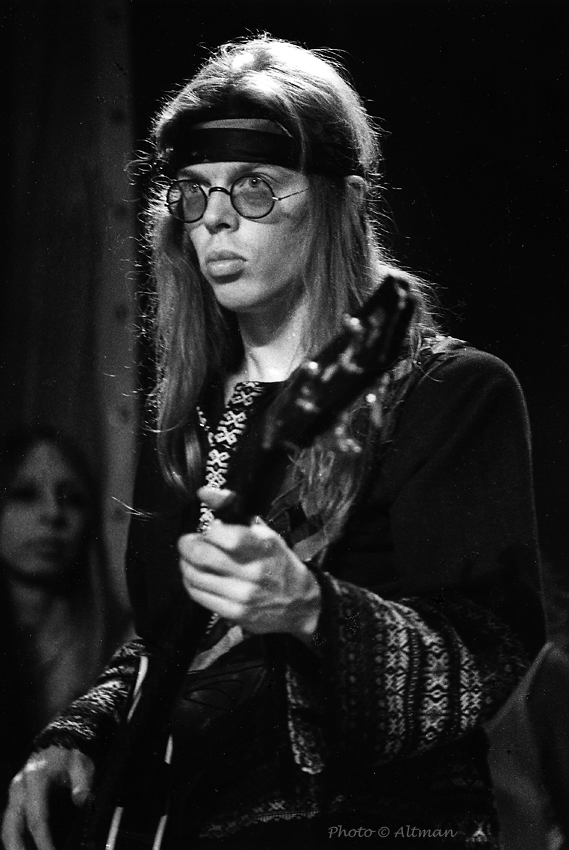 06
06 It's official. Radiohead have joined Bruce Springsteen on that short, elite list of artists that I will travel thousands of miles to see if they don't happen to be playing my hometown of Seattle.
It's official. Radiohead have joined Bruce Springsteen on that short, elite list of artists that I will travel thousands of miles to see if they don't happen to be playing my hometown of Seattle.Radiohead earned their place on that list this past weekend when I made the trip to Berkeley, California to catch them on the second night of a sold out two night stand at the Greek Theatre.
Now before we get to the concert, a couple of quick things about both the venue, and the city of Berkeley itself.
The Greek Theatre is simply a great place to see a show. It is designed as sort of a miniature Roman Coliseum, perfectly rounded like a bowl so that no matter where you are you have an excellent sight line. The sound is also magnificent, making for an all around great concert experience under a gorgeous moonlit (and foggy!) summer night.
Secondly, props have to be given to the Bay Area's phenomenal transit system, known to the locals as "BART." If you are anything like me, and have more than a few years experience under your belt traveling to foreign cities to see concerts, you already know that getting around can be both challenging and expensive.
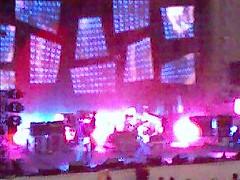
Not so in the Bay.
Getting around pretty much anywhere from the Oakland Airport, to the hotel in Berkeley, to the venue on the UC Berkeley campus was never more than a two dollar trainride away. If only every city (including my own here in Seattle) had their transit system down to the science that the Bay Area has.
But back to Radiohead.
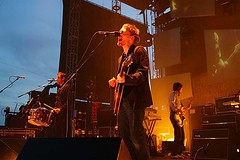
If you've followed this band at all over the years, you already know that they never play the same exact setlist twice. But they have never mixed things up quite the way they are doing on this very short American tour this summer. On back to back nights, you might get five of the same songs played at best. Plus, they are trying out a ton of new material. Lead vocalist Thom Yorke has his own solo album, The Eraser coming out in just a few weeks.
But the songs Radiohead are playing are not from that project. Rather, they are from a collective band effort expected to be released sometime next year.
So when I read the setlist online for the first show of the two night Berkeley stand, I was actually disapointed to see several of my favorite songs had already been played.
Unlike some Radiohead fans, I actually prefer the more ambient textures of albums like Kid A and Amnesiac over the guitar driven prog rock of OK Computer. So when I read that friday's setlist included songs like "Morning Bell" and "Pyramid Song," my heart actually sank a little, because I knew it wasn't likely they would be repeated at the Saturday show I was flying a few thousand miles to see.
And I was right. Not only were those songs not played on Saturday--the setlists were so different it might as well have been two different bands altogether. But I'm not complaining. Not at all.
Not only did Radiohead play no less than six brand new songs (one of which, "All I Need", was performed for the only the second time ever), they also dug deep into the most obscure reaches of their catalog. When a Radiohead show opens with "Airbag" and includes "Black Star" in the encores, you know you are witnessing something special.
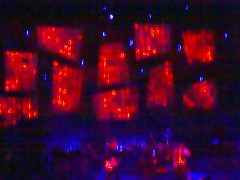
Even with the one song pretty much guaranteed to be played every night, "Everything In It's Right Place," Radiohead mixed it up with the gorgeous intro into the song of "True Love Waits." In between, we got everything from the jazzy, bass fueled darkness of "Dollars And Cents," to the full on Jonny Greenwood guitar assault of "2 + 2 = 5."
As for the new stuff? Yorke may have joked with the rapturous crowd that the new songs were "sketchy," but he wasn't fooling anybody. If songs like "Arpeggi" and "Down Is The New Up" are any indication, Radiohead's new album is going to be as challenging and groundbreaking as anything they have ever done.
The other thing about this Radiohead tour that is striking is the look. Compared to prior outings (especially the wild lighted pillars of the Hail To The Thief tour three years ago), there is a decidedly more scaled down look this time around with the only noticeable lighting effects being the rectangle shapes (pictured on this page) that double as video screens.
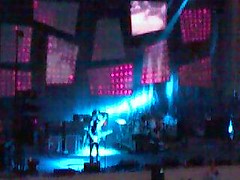
But like that Springsteen guy, Radiohead has taken their place as that rare band that I pretty much will travel anywhere, anytime to see in concert. They really are that great a live band.
If Radiohead play a show anywhere near you, do not miss them.
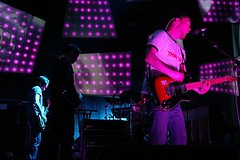
Setlist:
01 Airbag
02 2+2=5
03 Where I End And You Begin
04 15 Step (New)
05 Kid A
06 Dollars And Cents
07 Down Is The New Up [with long jam at the end] (New)
08 Nude (Unreleased song that's been kicking around for several years)
09 Paranoid Android
10 No Surprises
11 The Gloaming
12 All I Need (New. Second Time ever played)
13 Climbing Up The Walls
14 Go Slowly
15 Myxomatosis
16 Bangers 'N Mash (New)
17 How To Disappear Completely
Encore 1
18 Fake Plastic Trees
19 Arpeggi (New)
20 Black Star
21 True Love Waits
22 Everything In Its Right Place
Encore 2
23 Bodysnatchers
24 The Tourist














